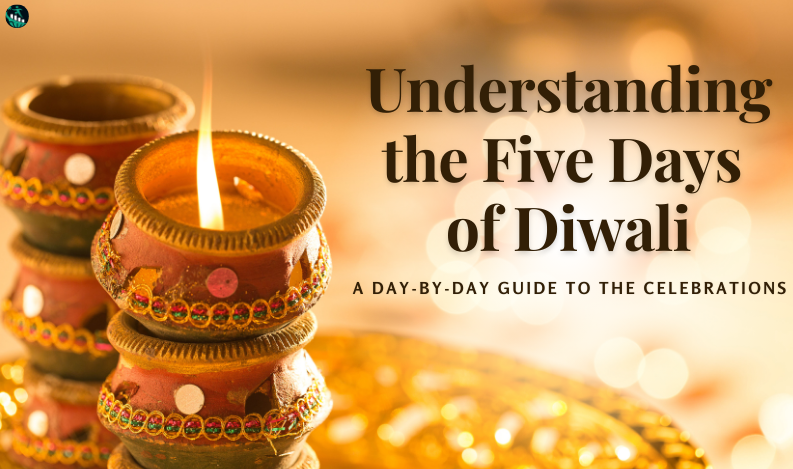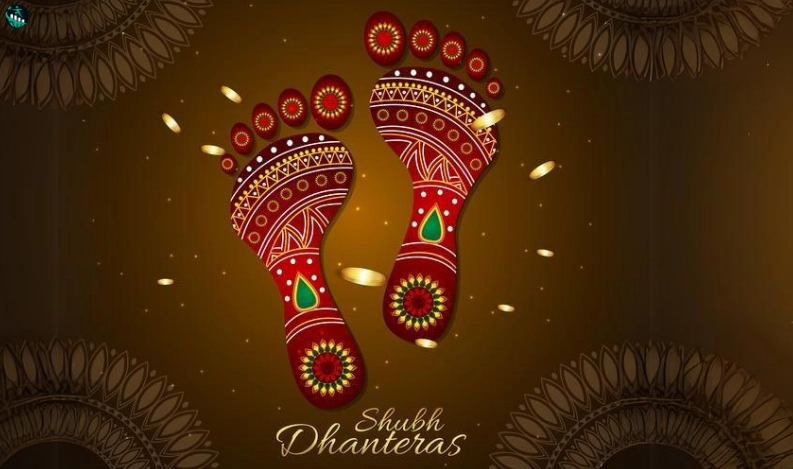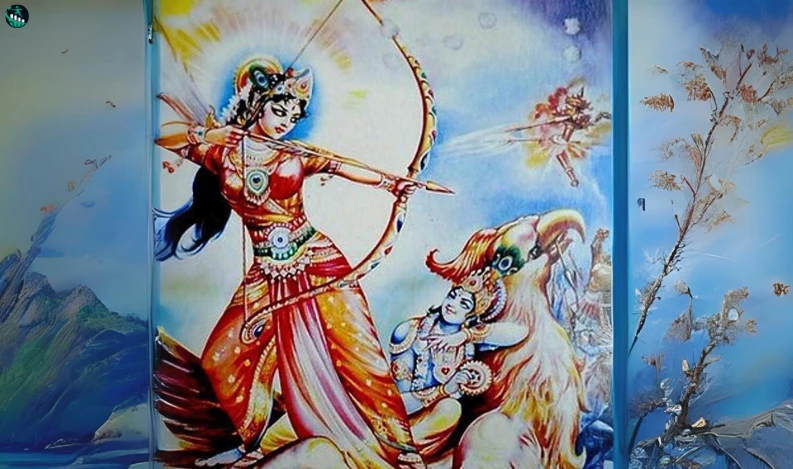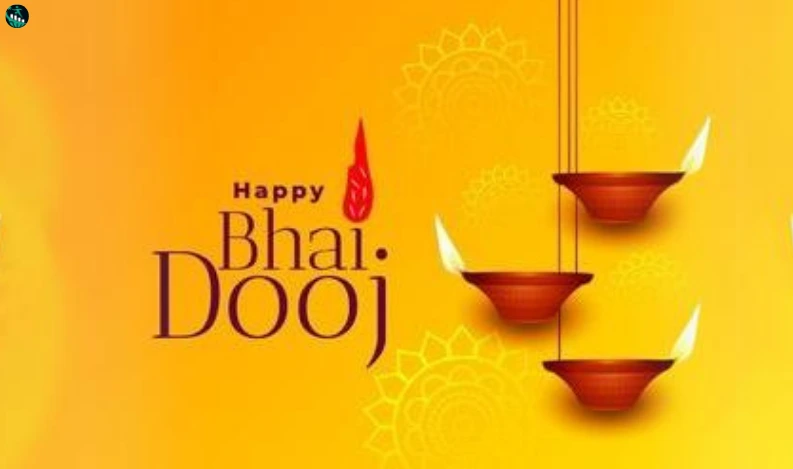
Understanding the Five Days of Diwali: A Day-by-Day Guide to the Celebrations
Diwali, known as the "Festival of Lights," is one of India’s most important and widely celebrated festivals. It marks the victory of light over darkness and good over evil. This five-day festival is celebrated with great enthusiasm and joy, involving elaborate traditions, beautiful lights, family gatherings, and delicious feasts. Each of the five days has its own significance, with different customs followed in various regions of India. Let’s take a closer look at the meaning behind each day of Diwali.

Day 1: Dhanteras (The Day of Wealth and Prosperity)
The first day of Diwali is known as Dhanteras, which comes from the Sanskrit words "Dhan," meaning wealth, and "Teras," meaning the thirteenth day of the lunar fortnight. This day falls on the 13th day of the Hindu month of Kartik and is dedicated to Goddess Lakshmi, the goddess of wealth and prosperity.
On this day, people clean their homes and shops thoroughly, believing that a clean home invites the goddess of wealth. They decorate the entrance with rangoli (colorful designs made on the floor with powdered colors, flowers, or rice) and light diyas (oil lamps) to welcome prosperity and good fortune.
One of the key traditions of Dhanteras is purchasing something valuable, usually gold, silver, or new utensils. It is believed that buying precious metals or new items on this day brings good luck and increases wealth in the coming year. Many businesses and shops also open their books of accounts on this day, marking it as an auspicious time to start new ventures.
In some parts of India, people also worship Lord Dhanvantari, the god of medicine, who is believed to have emerged from the ocean with a pot of nectar during the churning of the cosmic ocean (Samudra Manthan). This connects Dhanteras to health and well-being, making it a day to pray for good health alongside wealth.

Day 2: Naraka Chaturdashi (Choti Diwali)
The second day of Diwali is known as Naraka Chaturdashi, which is commonly called Choti Diwali or Small Diwali. It is celebrated on the 14th day of the Kartik month and symbolizes the triumph of good over evil. According to Hindu mythology, on this day, Lord Krishna defeated the demon king Narakasura, freeing 16,000 captive women and bringing peace and light to the world. This victory is seen as the victory of good over evil, and light over darkness.
In the morning, people take a traditional oil bath (abhyanga snan), which is said to purify the body and soul. This ritual is performed using scented oils and is believed to wash away sins, negativity, and bad luck. Many believe that this bath also prepares them for the main Diwali day by refreshing their minds and bodies.
Houses are illuminated with diyas and fairy lights in the evening, and small-scale celebrations take place with the bursting of firecrackers, especially by children. The focus of Choti Diwali is to prepare for the bigger celebrations that follow on the next day, while still spreading the festive spirit of light and joy.

Day 3: Lakshmi Puja (The Main Diwali Day)
Lakshmi Puja is the third day and the most important day of Diwali. This is the day when the actual Diwali festival is celebrated with great pomp and show. It is dedicated to Goddess Lakshmi, the goddess of wealth, fortune, and prosperity. People believe that Lakshmi visits homes on this night, blessing them with wealth and success for the coming year.
On this day, families clean their homes thoroughly, decorate them with lights, diyas, and flowers, and create intricate rangoli designs at their entrances to welcome Goddess Lakshmi. The lighting of diyas is symbolic of removing darkness and inviting light into one’s life.
In the evening, families gather to perform the Lakshmi Puja. The ritual involves placing statues or images of Goddess Lakshmi and Lord Ganesha (the god of wisdom and remover of obstacles) on a platform. Offerings such as sweets, fruits, and flowers are made, and prayers are recited to seek blessings for wealth, health, and happiness. The puja is usually followed by distributing prasad (sacred offerings) to family members and friends.
After the puja, homes are lit up with diyas and candles, and people burst firecrackers to celebrate the occasion. Fireworks symbolize joy and happiness, as well as the victory of light over darkness. Exchanging gifts and sweets with loved ones is also an important part of the tradition, as Diwali is a time for sharing joy with others.

Day 4: Govardhan Puja (The Day of Gratitude)
The fourth day of Diwali is known as Govardhan Puja, Annakut, or Padwa, depending on the region. This day celebrates an important episode in the life of Lord Krishna. According to legend, Lord Krishna lifted the Govardhan Hill to protect the people of his village from a destructive storm sent by Indra, the god of rain. Krishna convinced the villagers to stop worshipping Indra and instead offer prayers to the Govardhan Hill, as it provided them with food and shelter. The lifting of the hill represents the power of humility and devotion.
On this day, people prepare a large variety of vegetarian dishes, which are offered to the gods as a way of thanking them for a good harvest. This offering is known as Annakut, meaning "mountain of food." In temples dedicated to Lord Krishna, the deity is bathed in milk and dressed in new clothes, and then a grand feast is served to devotees.
In some parts of India, this day is also celebrated as Padwa, which symbolizes the love and respect between husbands and wives. Husbands present gifts to their wives as a sign of their love and appreciation. It is a day to celebrate the strength of relationships and the blessings of nature.

Day 5: Bhai Dooj (The Bond of Brothers and Sisters)
The fifth and final day of Diwali is Bhai Dooj (also known as Bhaiya Dooj or Bhau Beej in some regions). This day celebrates the special bond between brothers and sisters, similar to Raksha Bandhan. According to legend, Yamraj, the god of death, visited his sister Yamuna on this day. She welcomed him with a tilak (a mark on the forehead), performed aarti, and offered him sweets. In return, Yamraj promised to protect her and blessed her with a long and healthy life. Since then, Bhai Dooj is celebrated as a day where sisters pray for the well-being and success of their brothers.
On this day, sisters perform a small ceremony where they apply tilak on their brother's forehead and pray for his long life. Brothers, in return, give gifts to their sisters and promise to protect them always. This day strengthens the bond between siblings and is filled with love, laughter, and family bonding. A festive meal is usually shared, and the day ends on a note of affection and warmth.

Why is Diwali Special?
Diwali is much more than just a festival of lights. It brings with it deeper messages of hope, kindness, and the triumph of good over evil. It reminds people to keep their hearts full of light and to treat others with love and respect. Diwali is a time for new beginnings, forgiveness, and joy. It’s a festival that encourages us to let go of the past and step into the future with positivity.
The five days of Diwali highlight different values—whether it's praying for prosperity on Dhanteras, cleansing the body and mind on Naraka Chaturdashi, seeking divine blessings on Lakshmi Puja, giving thanks on Govardhan Puja, or celebrating family bonds on Bhai Dooj. Diwali brings families together and strengthens community ties, making it a festival that is loved by everyone.
Conclusion
The five days of Diwali are full of joy, spirituality, and love. Each day carries its own significance, reminding us of the values of wealth, health, gratitude, and family bonds. From lighting diyas to sharing sweets with loved ones, Diwali fills our hearts with light and happiness. Celebrating this festival means embracing positivity, kindness, and new beginnings.
You may also like:-



Recent Comments:
No comments yet.